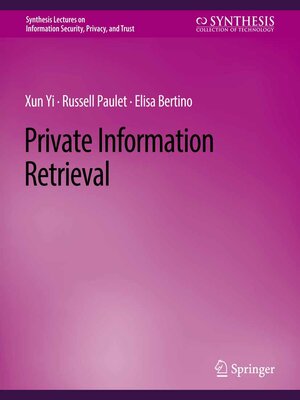Private Information Retrieval
ebook ∣ Synthesis Lectures on Information Security, Privacy, and Trust
By Xun Yi

Sign up to save your library
With an OverDrive account, you can save your favorite libraries for at-a-glance information about availability. Find out more about OverDrive accounts.
Find this title in Libby, the library reading app by OverDrive.



Search for a digital library with this title
Title found at these libraries:
| Library Name | Distance |
|---|---|
| Loading... |
This book deals with Private Information Retrieval (PIR), a technique allowing a user to retrieve an element from a server in possession of a database without revealing to the server which element is retrieved. PIR has been widely applied to protect the privacy of the user in querying a service provider on the Internet. For example, by PIR, one can query a location-based service provider about the nearest car park without revealing his location to the server. The first PIR approach was introduced by Chor, Goldreich, Kushilevitz and Sudan in 1995 in a multi-server setting, where the user retrieves information from multiple database servers, each of which has a copy of the same database. To ensure user privacy in the multi-server setting, the servers must be trusted not to collude. In 1997, Kushilevitz and Ostrovsky constructed the first single-database PIR. Since then, many efficient PIR solutions have been discovered. Beginning with a thorough survey of single-database PIR techniques,this text focuses on the latest technologies and applications in the field of PIR. The main categories are illustrated with recently proposed PIR-based solutions by the authors. Because of the latest treatment of the topic, this text will be highly beneficial to researchers and industry professionals in information security and privacy.







